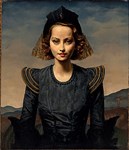Back in June 2012, £5100 (plus 20% buyer’s premium) was bid for a rare monochrome blue and white kingfisher tile – a record bettered in December 2013 when a Sands End period tile painted in shades of blue and green with a pair of chameleons took £7200.
The sale on December 12 last year included impressive bids for two 6in (15cm) square tiles consigned for sale from the family of Tom Kremer, a games designer, entrepreneur and publisher best known for his discovery and popularisation of the Rubik’s Cube.
Both tiles – removed from a tray for sale and in excellent condition – were marked for the Late Fulham Period (1897-1907) when De Morgan was working in partnership with decorators Charles and Fred Passenger and Frank Iles.
While the motifs (a water bird with an eel and a cockerel) are both familiar, both tiles demonstrate the complex triple lustre technique that, requiring multiple firings, was particularly expensive to produce. Estimated at £1500-2000 each, the bird and eel sold at £6000 and the cockerel for £4800.
The buyer of both was a European-based specialist collector who had purchased pieces of Cantagalli Isnik-style lustre offered by the auction house in February. Two other similar tiles from the same source – a peacock and a hoopee – will be offered in a future sale.
Leading the auction at £34,000 was a Darwinian stoneware dog jar and cover modelled by Robert Wallace Martin in 1884. This 9in (23cm) piece, modelled crouched on all fours with human features and a wide, smiling toothy grin, attracted three bidders before selling to a UK private collector at a sum towards the lower guide.
“The Martin Brothers market remains good – there are some new collectors arriving,” said specialist Michael Jeffrey.















